Welcome back to Goonhammer’s series for aspiring Praetors. We know that the Horus Heresy system can seem intimidating to players unfamiliar with its particular quirks, but this series aims to equip you with everything you’ll need to play out epic clashes on the battlefields of the far future with your very own army. In this series, we’ll be walking you through how to build your force and command it to glory, including everything from units to tactics to lead your army to victory.
In this mini-series we’ll be taking a look at all of the units that every Space Marine army can field, how they operate, how you might want to equip them and what you want to point their guns/combat weapons at on the table.

In the second article of the series (check our our analysis of the Troops choices [HERE]), we will be diving in and looking at the plethora of HQ’s you have to choose from.
HQs
These are the leaders of your army. Whether they’re Masters of the Legion unlocking Rites of War for your force to use or a Centurion with any one of many different Consul upgrades which specialise them even further with a host of new rules and wargear options. These are the most customisable models in your army and you can really do just about anything you like with them!
Legion Praetor
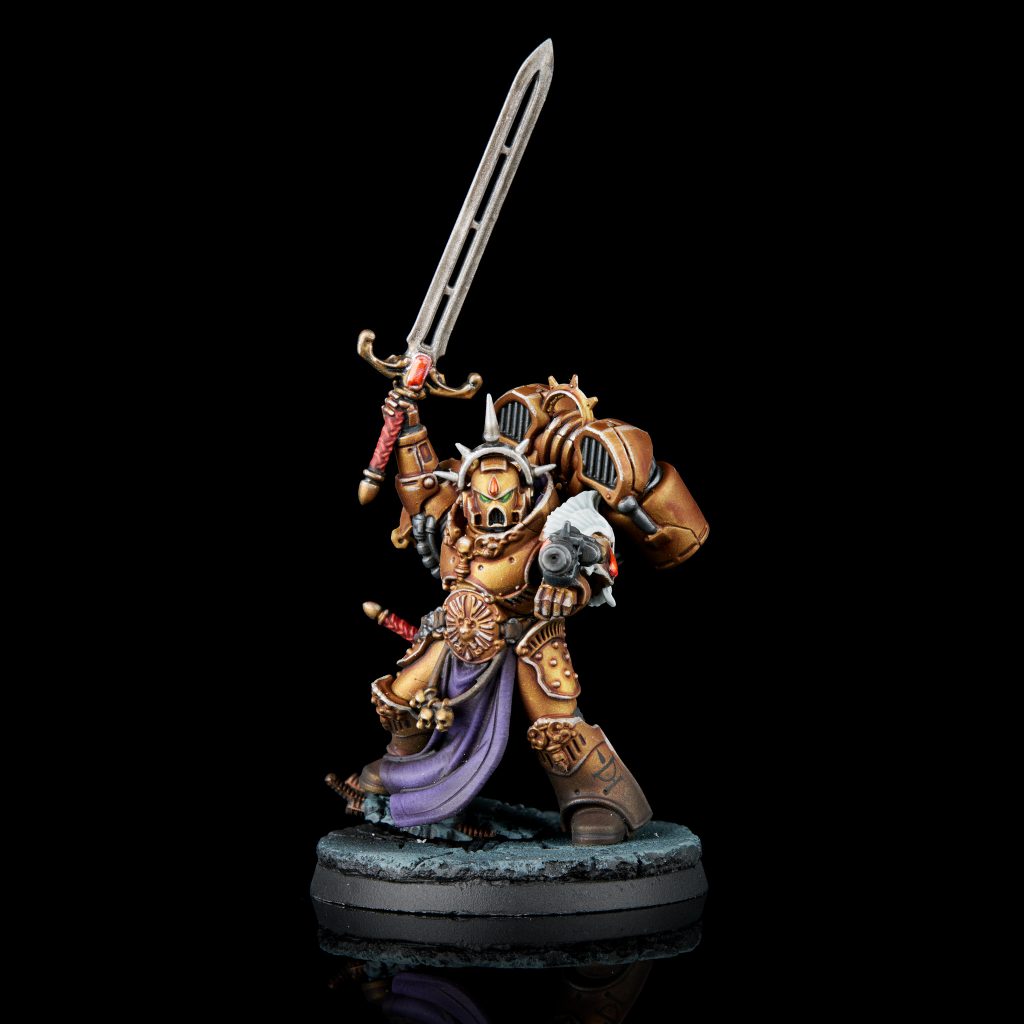
Roughly equivalent to a Chapter Master in Warhammer 40,000 parlance, a Legion Praetor is the most senior officer in a Legiones Astartes force you will see that isn’t a named character or primarch. These guys are the absolute pinnacle of (generic) space marine capabilities, offering an extremely powerful platform with some important special rules attached.
Let’s talk about Master of the Legion first of all. While this rule is also available to a select few other models (notably Primarchs and the Delegatus Consul) the Praetor is the most common example of it. Master of the Legion is a little bundle of special rules that can fundamentally change how your list is created. If a detachment has at least one Master of the Legion then it can select a Rite of War. We’ve covered Rites of War in other articles, but this rule is what lets you access them. For that reason you’ll likely want at least one in any list outside of perhaps Zone Mortalis or other small point level games.
It also allows you to take a retinue (a command squad or legion specific unit that also has the Retinue special rule) as part of the same Force Organisation slot as the HQ. This can be extremely important for some legions, but broadly command squads are very good, and for that reason having a Master of the Legion to run one is a good move (we’ll talk about them in more detail in a bit).
In short, you’re going to want to bring a Praetor along to any game that you’re not also bringing a Primarch or praetor-level main character along to. But you shouldn’t feel like this is a “tax” unit – Praetors are incredibly powerful and effective units that can do serious damage.
There are three “varieties” of Praetor, and the differences (other than wargear options) can be summarised as follows:
- The Legion Praetor has one less wound than the other two options, but this is actually less of a disadvantage than you might think. The majority of serious opponents a Praetor is going to meet is going to have a way to dish out Instant Death, and so an extra wound isn’t likely to save them. The defences that really matter (an armour save of 2+ and an invulnerable save of 4++) are the equal of the Cataphractii option, but without any of the downsides that come with that. Plus, the stock Praetor comes with Frag Grenades, a very useful bit of war gear for a unit that’s going to want to be charging and engaging enemies on their own terms. However it does only come with a chainsword and bolt pistol, meaning it has the least valuable basic equipment set to upgrade from, making those upgrades more expensive.
- The Legion Cataphractii Praetor is the most expensive of the three options due to having an extra wound over the Legion Praetor and a better invulnerable save than the Tartaros Praetor. However, this choice isn’t without downsides – it has the classic Cataphractii problems of being Heavy (and thus unable to run) and also being unable to sweep. The lack of running isn’t too bad as long as you have a good way of getting him up the table, but the lack of sweeping on such a combat monster is a real shame. However, it does come with a power weapon and combi-bolter as standard which is a good basis to build from.
- The Legion Tartaros Praetor is, counterintuitively on first examination, the cheapest of the three. This is because despite having that extra wound it’s rocking only a 5+ invulnerable save, making it the most fragile of the options. It can, however, sweep, and does have a little more mobility than the Cataphractii, so it’s not a bad option by any means.
While there are absolutely situations in which all three can thrive, and there are arguments for taking each one, the standard Legion Praetor in artificer armour is probably the best choice in the majority of cases. The reasonable point cost, the good defences and the advantages of Frag Grenades and a wider selection of equipment is just too good to look past in many situations. Plus they can ride a bike, jetbike or have a jump pack, which gives them a lot of flexibility.
But how should you outfit your Praetor? Well, the “default” equipment option is a Paragon Blade. There are very few sources of Instant Death at Initiative, and so being able to swing at Initiative 5 with the possibility of an Instant Death blow is more than worth the price of entry for this weapon. You could stay with the stock weapon (chainsword or power weapon depending on Praetor type) to keep the model cheap, but this is honestly a waste of the combat capacity of this beast of a fighter. Alternatively you could consider one of your Legion-specific weapons if you have one, as these tend to be at least good and some of them are excellent. Finally you might pick a Thunder Hammer – while Unwieldy and thus striking at Initiative 1, it’s Brutal and this is pretty important vs a select few targets that you’re not applying Instant Death to anyway. It’s a niche choice, but not a bad one, especially if you have an ablative unit and want to hunt dreadnoughts.
For ranged weapons the choice is less important. Ultimately you’re likely to be only making a single shot with it, so you need to balance the opportunity cost with the points cost. There’s nothing wrong with taking a plasma pistol or such, for the same reasons it can be worthwhile on a sergeant in a squad, but probably you’re best either running very light on the ranged weapon (stock weapon) or going for something fancy like a disintegrator pistol, since throwing out an instant death shot is not to be sniffed at. Just be aware of specialist weapons and getting that extra attack.
Legion Centurion
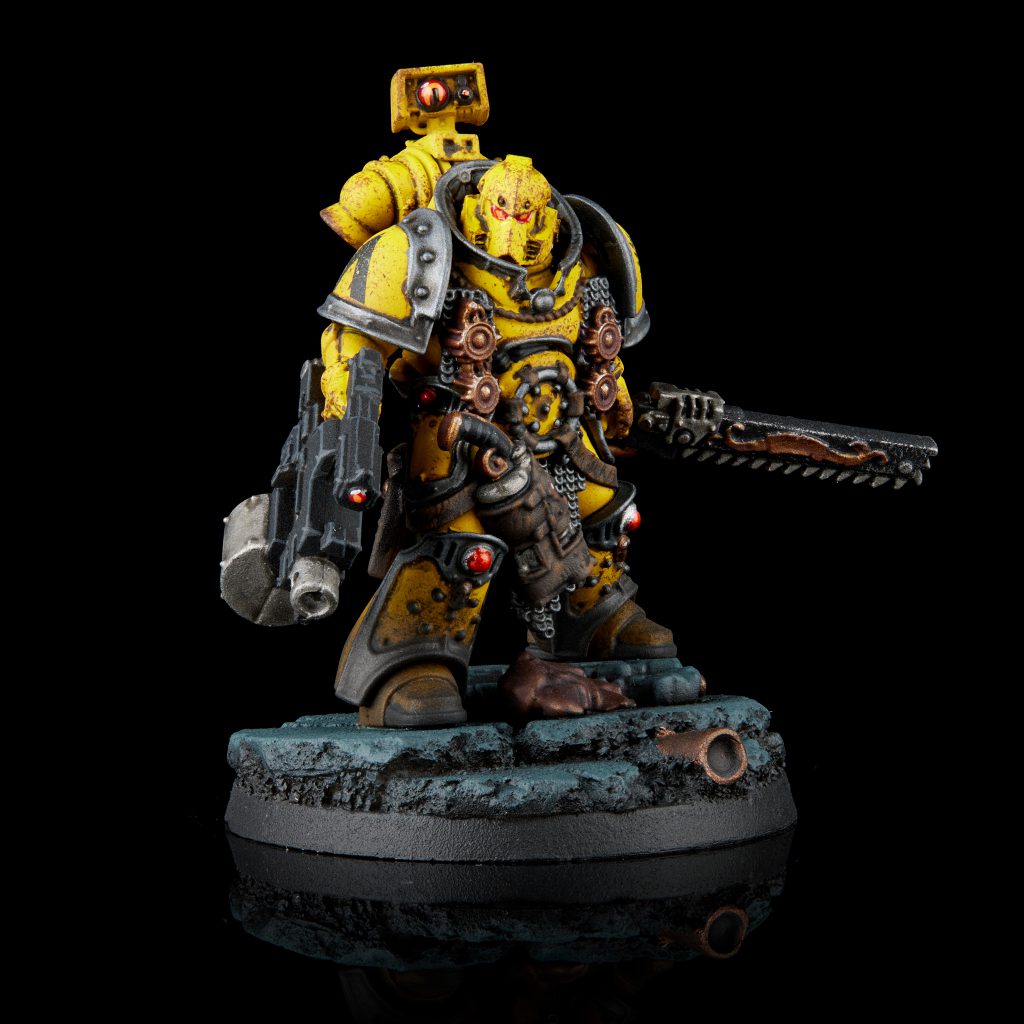
The junior officer in the HQ slot, the Legion Centurion is a competent and capable combatant, but that’s rarely why you take one. Outside of specific army builds (like the Dark Angels’ Rite of War that lets you embed endless centurions in tactical squads) you’re not going to be running them as a Centurion but as a Consul. These specialist officers are absolutely fantastic, and each one really demands its own considerations.
To briefly cover the vanilla Centurion: the advice pretty much remains the same as for the Praetor, but you can’t take a Paragon blade. Therefore if you have a Legion-specific weapon you should go with that, and if not then consider a normal Power Weapon, Power Fist or a Thunder Hammer.
The calculus for what kind of Centurion to run is a bit different, since they lack an Iron Halo, instead getting a Refractor Field. That makes the Legion Centurion the most fragile of the three, and it’s probably worth upgrading to a Tartaros Centurion for a little more stamina, or even a Cataphractii Centurion if you’re not planning on getting into melee much.
Librarian
The main psyker for most legions, the Librarian is a consul upgrade that can be taken by all three types of Centurion. It’s not a cheap upgrade but it’s absolutely worth it. Putting aside legion-specific disciplines all of the core psychic disciplines are definitely viable (except maybe one, we’ll get to it) but they all have very different roles. One thing to remember is that Biomantic Augmentation and other powers like it replace a shooting attack… including in Reaction. So using Overwatch to cast this power is absolutely valid to buff a unit before they are engaged.
- Biomancy is the warrior’s discipline and the core power (granting bonus strength and toughness to a unit) and psychic weapon (a high strength Rending 4+ attack good for cracking vehicles) is worth considering.
- Divination is a great assassin’s discipline, and a librarian embedded in a heavy support or tactical support squad will get vicious use out of the core power.
- Pyromancy is probably the least competitive of the disciplines. Pyromantic Combustion is potentially useful in creating obstacles on the battlefield, but the raw damage output of this and of Pyromantic Desolation are pretty muted compared to other options. Desolation really suffers from being unwieldy, though the AP 3 is enough to cut through standard power armour that you might actually hit with the blast. I’d say embed a pryomancer in a terminator unit and tackle power armour troops but if you’re doing that then… you probably can just kill them with terminators? It’s an odd discipline to find a convincing use case for. However, I can see it being great when combined with a rite that makes difficult terrain dangerous or the like (such as the Death Guard one).
- Telekinesis is a defensive and heavy support power set, with Telekine Dome being a great way to safeguard a heavy support squad or similar. Telekine’s Focus also suits this role, though it’s not going to be most useful against light vehicles.
- Telepathy is extremely powerful and it’s likely to see a lot of play. Being able to switch off Reactions is incredibly strong, and Telepathic Hallucinations is probably the most efficient way to impose Pinning in the entire game. The combination makes this a phenomenal all-rounder of a discipline, though the ranges mean you’ll probably want your librarian leading from the front.
- Thaumaturgy is something of a let down, and the powers are honestly… Not great? They’re not great. Thaumaturgic Succour lets a unit nearby roll a die per (non-vehicle) model and get back a wound on a 5+ but… the way wound allocation works means you’re almost never going to have multiple models missing wounds. You can’t restore above the original wounds characteristic either so… this psychic power restores, in all but the most exceptional circumstances, a single wound to a single model. Those exceptional circumstances (on units that are all characters) do bear a call out however, because on a handful of legion specific units this becomes rather good. Thaumaturge’s Cleansing is ok, an AP 3 template weapon isn’t to be sniffed at, but equally it’s not amazing. It’s much better against demons but that… requires your opponent to bring demons. Potentially fluffy, but not good.
Psychic Hoods are quite good for making enemy psykers’ lives worse, but are they worth 15pts? Probably not unless you’re very sure you’re going to be fighting Thousand Sons.
Esoterist
Esoterists are specialist librarians that can summon or abjure demons, which sounds neat but as of time of writing the Demon list isn’t actually available and so it’s hard to say how good this is. Watch this space.
Master of Signals
The Master of Signals is a potent force multiplier for an army but the way the unit profile has been built does lead to some problems. They provide excellent benefits to reserve rolls, and can provide their leadership to units making morale or pinning checks, which is a great counter to snipers and other disruptive forces. They also come with a great selection of wargear except they also come with a vox disruptor array. This bit of kit greatly increases the chances of drop pod assaults, deep strikes, area denial drops and subterranean assaults being disordered for your opponent and you. This means you get great bonuses to bringing on your reserves but then they may well be a disaster when you do. There’s no way to turn this off, and so this unit is, at best, a mixed blessing. Great if you’re using standard reserves or making flanking assaults, or bringing in a single deepstrike unit (because disordered only affects units after the first). This probably just needs fixing in errata.
Champion

If you want to field a dangerous melee combatant at a lower price point than a Praetor, then a Champion is probably your best bet. They get a free Paragon Blade which is often the first choice of melee characters, as well as some interesting special rules to go along with it. You get WS 6 with this consul, making him a combatant on par with a Praetor and then you get Never Back Down which is an interesting bonus and penalty. The Champion must accept and issue challenges, which can be a problem (though if you don’t want this model fighting in challenges, what’s the point), but every combat he is in a challenge the unit he’s a part of gets Fearless. This is excellent, making any unit that he’s a part of an excellent tar pit (until there are no more characters to kill). This guy and a 20-marine squad of tacticals or despoilers can hold up an essential enemy infantry unit for a shockingly long time. Alternatively run him with something deadly and really go to town on those who stand in your way.
You should probably pair the paragon blade with something cheap like a bolt pistol, but you might consider a second melee weapon with some anti-vehicle punch, just to cover your bases.
Forge Lord
The Forge Lord is a consul type that involves bringing Thallax along as part of your army. We’ll come back to evaluate this when the Liber Mechanicum book is released.
Primus Medicae
A tooled up apothecary, the Primus Medicae is really just an apothecary that can, because it’s an Independent Character, join units that can’t normally have an apothecary join (mostly terminators). This is certainly worth considering as it tunes terminator squads from being “horrifyingly resilient” to “let’s maybe choose another target”. Probably over the top for most things, but if you’ve got a scary special character and some terminators rocking around, one of these in the unit too will make them even scarier. Just remember it doesn’t work on Primarchs.
It does also get the Sacred Trust rule but this is pretty edge case in use – it allows rerolls on It Will Not Die rolls but the best targets for that are big models like vehicles and dreadnoughts and this only works on Infantry and Cavalry. The few models that get this rule might like the buff, but it’s still only recovering a single wound in 99% of situations.
Siege Breaker
The Siege Breaker is a support character that changes up army list creation a little and gives a tasty bonus to a unit he pals around with. He gets sunder (eh) and grants sunder to a unit with 6″ (much less eh). Good targets for this are probably artillery, heavy vehicles and heavy support squads that don’t already have sunder.
They also get some phosphex bombs and a nuncio vox making them scary to get close to and also a decent supporting model for other units. Definitely one to keep with your artillery… especially artillery that you’ve given Phosphex shells. What’s not to love about that?
Chaplain
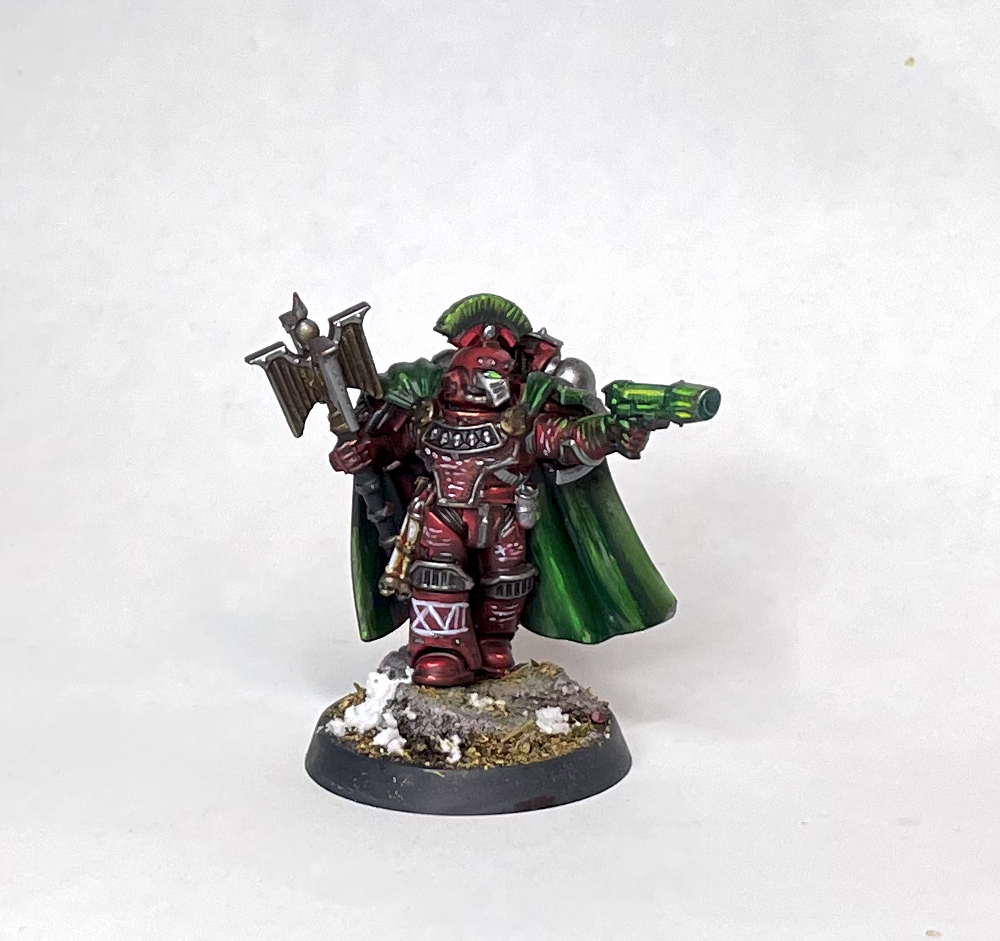
One of the more minor upgrades, this grants the Chaplain (and a unit he joins) the Hatred (Everything) and Stubborn rules. This is a pretty nice buff for a melee unit, and a chaplain with a 20-marine unit of despoilers or something similar is going to be feared. The Master-crafting on the power weapon is nothing special but is fun, and Ld 10 is actually a really big bonus, against especially on a big unit you don’t want to run away. These guys definitely feel like they exist to lead a big group of angry guys into combat.
Vigilator
The Vigilator is your sniper of choice, though you pay a fair for it – it’s certainly not a cheap consul upgrade. That said you get a free MC nemesis bolter for your trouble (which rules) and some melta bombs (which is… good I guess?). You also get to give him infiltrate or scout, and he gets the Sniper special rule, Rending (2+) and Shell Shock (1). If you are not one shot killing a sergeant or apothecary with this guy every damn turn then you’re doing something wrong… and hopefully pinning a unit as a result. You also get a special rule that gives nice bonuses against a specific units for you and any seekers you’ve brought along.
You can leave this guy free to snipe in a safe place on his own, but a savvy opponent is gonna slam some lascannons into him and end his life. It might still be worth it. If you embed him in a unit of recon marines with nemesis bolters and then put them on top of a high bit of terrain which is tempting, you’re going to find that they lose Skirmish and so become a lot less tough. It’s a tricky one.
Pathfinder
This is your scout character, designed to run with Scout Squads and offer leadership to them. It’s probably one of the most niche consul choices, as scouts (while great) are not a common pick and exchanging your artificer armour for scout armour is tough. That said you get a nice little bundle of special rules and a fancy shotgun for free. You might think the key bit is granting scout to other units – a pathfinder in a nasty combat unit in a transport can suddenly make a scout move before the game starts! Except it can’t, because it has infiltrate, and infiltrate ICs can’t join non-infiltrators. Cool in a fluff list, but not a good character.
Moritat
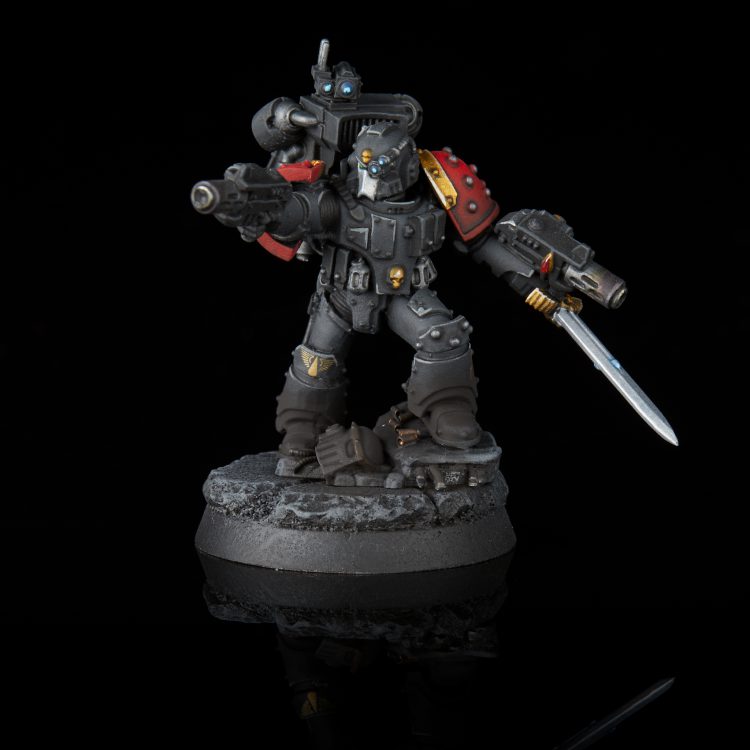
The consul with the most complex special rule in the game, the Moritat could be taken as a lone assassin, but he’ll be murdered in short order by any half-way competent opponent. The real place he shines is embedded in a destroyer unit, jum-packing about the place doing warcrimes with two guns. Volkite is probably my pick, but there are some very cool alternatives depending on your legion – Blood Angels Moritats in particular can be spicy.
Ok, ok, there’s another way to run these guys. A pair of disintegrator pistols is an extremely expensive, extremely stupid way of running a Moritat, but one I can’t stop thinking about. You almost certainly will die if you ever get to the point of shooting for a second time, but let’s face it you’re buying this for the triumphant opening volley.
Praevian
Another consul that pulls units from an army list that we don’t have access to yet – we’ll come back to this one as well.
Delegatus
The Delegatus is basically the consul choice for if you are bringing a small army and don’t want to spend points on a Praetor. You get Master of the Legion (so you can have a command squad, very good) and you don’t need to have 1000pts (which is of marginal value in crusade games but great in Zone Mortalis). You do get a rather nice rallying ability that lets you use your Leadership to rally other units in line of sight. Now this is good for falling back, means they get a leadership bump effectively, but this is fantastic for pinning, because it’s one of the only ways in the game to break pinning early once that pinning check has failed. This probably isn’t an ability forgoing a praetor for, but if you’re not excited about bringing one it could be in the right meta. If your opponents are regularly sniping your stuff and forcing pinning and it’s costing you games, maybe this is the guy to bring along. If you do, probably bring a Champion as well so between the two of them they can be as dangerous as Praetor.
Herald
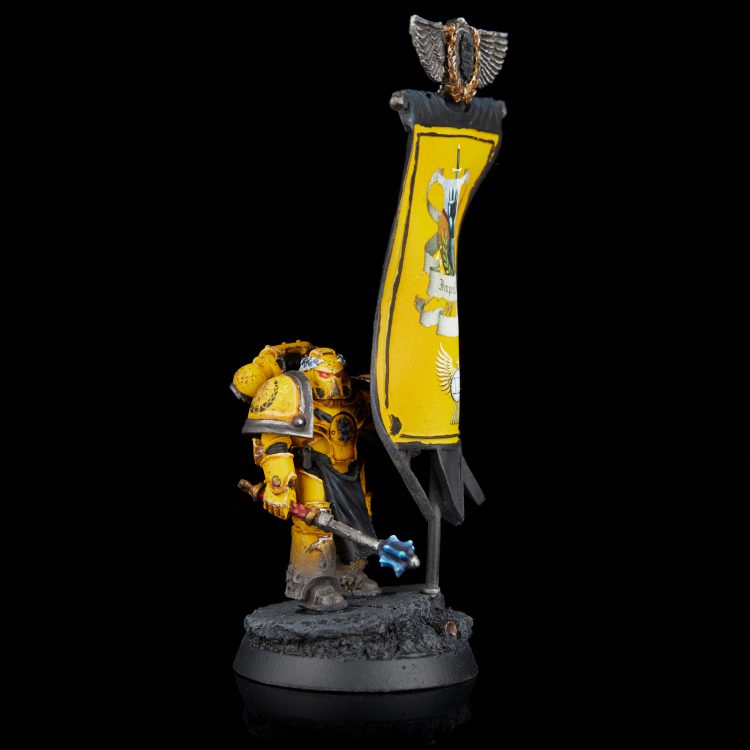
One of the best Consuls in the game, the Herald does a couple of extremely good things. First he is Fearless (which passes to a unit he joins) and he has Fear (1), so you become impossible to force to fall back, and much more likely to make your opponent retreat from melees. This makes him best combined with a unit that can sweep (don’t throw him in with cataphractii without a good reason). But he also gets to bring along a Legion Standard which, among other things, makes him Line. This means you can embed this guy in a unit and make them scoring, including a terminator unit or other elite unit. This is absolutely fantastic, and can turn a dangerous elite unit into a powerful all-rounder.
Armistos
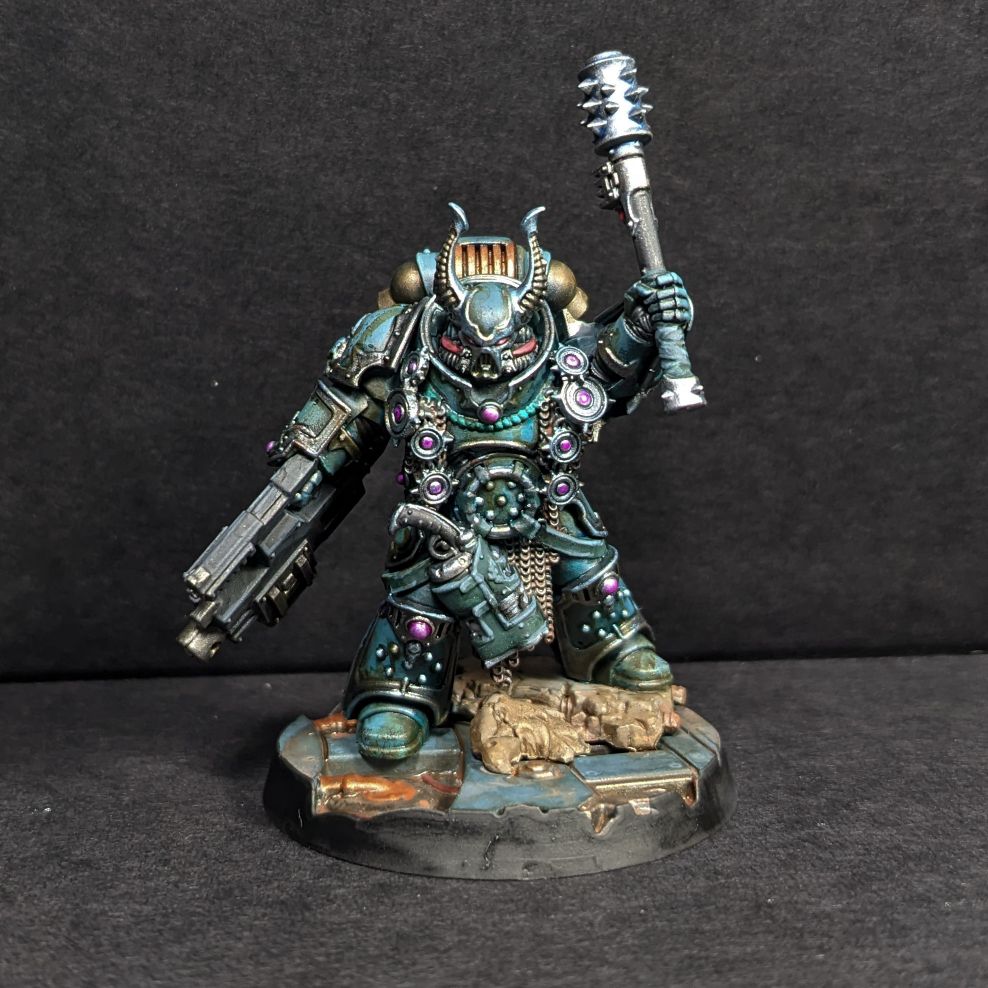
The Armistos wields a master-crafted heavy weapon of your choice, and comes with an augury scanner and a cognis-signum. Look, as nice as the heavy weapon is here, this guy exists for one reason: to give up his shooting and grant +1 BS to a heavy support squad he’s standing in. Because of that just give him the cheapest weapon (the heavy bolter) and don’t worry about his shooting output – if you’re at the point where it’s better for him to be shooting than for the unit, you’re probably in trouble anyway. He does mean you don’t need to pay for an augury scanner in the unit though, and also it does mean you don’t need to worry about night fighting at all. All good stuff.
Mortificator
The Mortificator is an unusual consul that lets you bring a single Contemptor dreadnought along to babysit and then run at stuff with. Contemptors are great, so packing another one into a list is great (though Contemptor fatigue is already running high, this early in the edition). The Dreadnought then gets tougher with It Will Not Die (5+) and of course the consul’s Battlesmith rule. Servo arms and Corposant staves are OK (and servo arms grant an additional attack but none of the rules say you can’t just use it for all your attacks… so you probably should) and having a baby dreadnought means you can soak hits on that before striking back with the Unwieldy arm. Together this is a tough little duo that will cause havoc… but it doesn’t do anything more than that. Most consuls enhance other units or create completely new options, and this doesn’t really do either – it sort of enhances a Contemptor Dreadnought Talon, but of exactly one dreadnought. It’s certainly not bad thanks to the oppressive dominance of Contemptors, but it’s not top shelf either.
Primus Nullificator (Expanded)
Only available on a Cataphractii base, the Primus Nullificator is a strongly thematic choice but not necessarily a very effective one. It allows you to tweak your army composition to bring along nullificators as a troop choice and drop the cap of a single unit, and it shares a lot of the same rules and kit as that unit. Basically, if you want to field an army of dedicated demon hunters, this is a pretty damn cool way to do it. But I don’t know how often you’re going to want to, and if you do it’s probably just going to be to load up on disintegrators which is deeply fun but also deeply stupid. This is a flavour pick and that’s ok, but it’s not going to win you many games.
Warmonger (Expanded)
For legions that don’t have much good access to alternative means of deployment (deep strikes, outflanks, infiltrates, etc) then the Warmonger is going to be an extremely appealing prospect. It’s sensible to make the most of this single unit deepstrike, and to ensure that what you bring is tough enough to endure the potential downsides. The obvious downside is the potential for wounds, but this isn’t as significant as you’d expect, especially on a terminator squad (a 10 model squad is generating on average 1 2/3 wound on drop, not enough to actually kill a single model). The more substantial downside is Tip of the Spear, which forces the unit to Charge if it can (though the charging player gets to pick the target unit at least) – a canny opponent will use this to easily tarpit the warmonger and friends, especially if your deepstrike scatters off target.
Legion Command Squad
Like Praetors and Centurions command squads come in three flavours: Tartaros, Cataphractii and Vanilla. As with those, the Vanilla choice is probably the most efficient and flexibly useful, but all of them are extremely solid.
The terminator versions are basically just slightly tweaked Legion Terminator units that don’t take up a slot since you put them with a Master of the Legion as a retinue. They can have fewer models (3 models at minimum) or they can have the normal minimum size (5 models) but they can’t get up to 10 terminators in a unit like their Elite slot counterparts. They do get WS 5 which is a significant bump, and probably makes them worth taking on their own, and one of their number is a Standard Bearer bringing a Legion Standard that makes this unit Line. All in all if you have a terminator Praetor bringing one of these units is a very good idea.
Where command squads get spicy is with the standard Legion Command Squad. These are the command squad equivalent of Veterans, like the terminators are of their Elite choice, but all the models in the unit get artificer armour. This is a huge jump as a 2+ save is a tremendous boost over a 3+ thanks to the paucity of of ap2 in the game. They don’t have an invulnerable save so they’re still not as tough as the terminators, but their unit size caps out at 9 models (for some reason) so you can have a decent number and a big block of these with power weapons will be scary and tough and generally do work. Especially since they’re also Line. If you can take a command squad it feels silly to not take a command squad.
Legion Damocles Command Rhino
What a weird unit. You can basically pack a centurion or praetor in artificer armour and a small command squad into one of these and in return you get a couple of benefits. First you get an 18″ bubble of the character’s leadership for your other units to use (which is actually pretty significant given the impact of Leadership in the game, especially with pinning being so potent) and second you get to reroll all your reserve rolls. This latter is great, especially if you have significant reserves coming in, but it’s not universal. If you have a reserve-heavy list and you have a battle plan that relies on it being as consistent as possible, this might be worth it. The Leadership buff is trickier in some ways – the most important things this is going to buff is resisting pinning (which this absolutely does) and also stopping units falling back from combat and getting swept. Now it can do this, but 18″ isn’t that far and anything that’s threatening a unit within that distance aggressively with close combat is probably a bit close to the Damocles for comfort. Played carefully it’s potentially big, but you can’t assume it will always work. The bigger issue in some ways is it leaves your Big Guy stuck in a metal box when really to get his points value back he needs to be out there killing stuff. A pick for a particular kind of army that isn’t a must have by any stretch of the imagination.
Wrapping Things Up
The HQ slot, like the Troop slot, is one that you’ll have to interact with no matter what kind of army you choose. Those there are only a small number of datasheet entries, and most of them are different versions of the same thing, this hides the real variety of the slot, which is consuls. Regardless, you HQ slots can be powerful combatants and you shouldn’t be leaving them on the bench the whole game (or in a Damocles Rhino).


